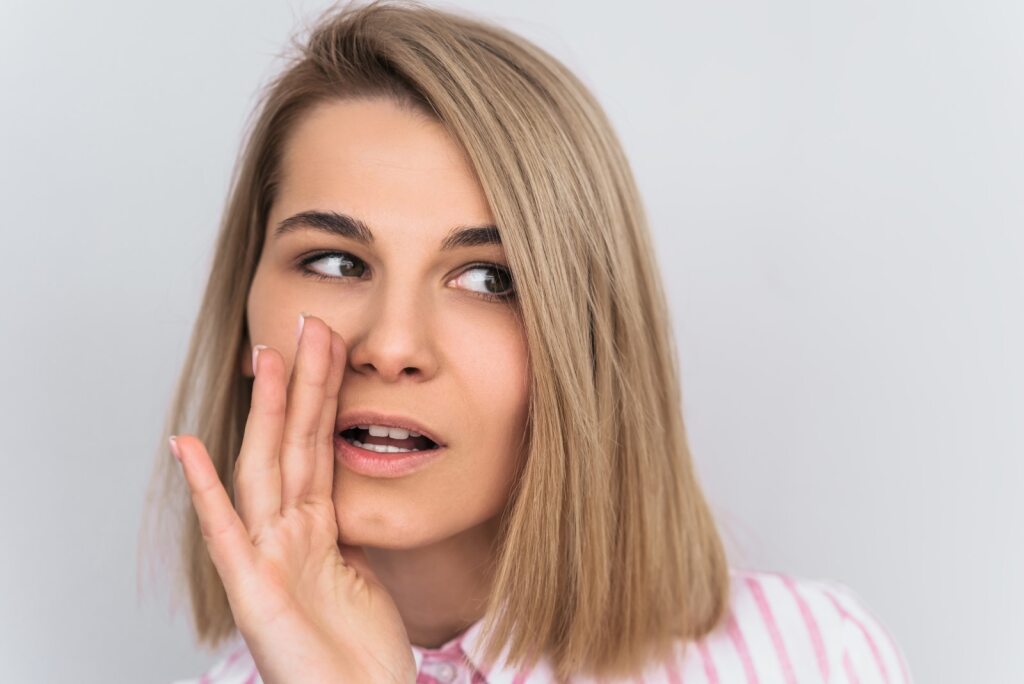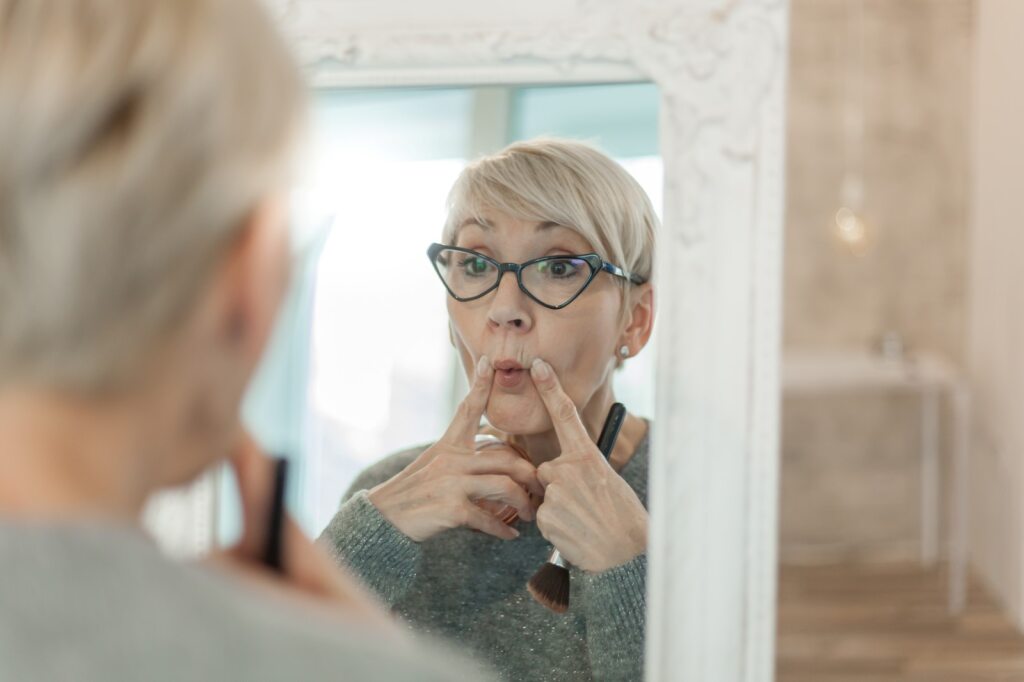Huulten ohentuminen

Huulten ohentuminen on ongelma, joka vaikuttaa moniin ihmisiin erityisesti iän myötä. Ajan kuluessa huulten täyteläisyys vähenee ja niiden muoto saattaa muuttua ohuemmaksi ja vähemmän elastiseksi. Tämä voi vaikuttaa kasvojen yleisilmeeseen ja itsevarmuuteen.
Huulten ohentuminen voi olla myös merkki ihon rakenteen muutoksista, jolloin huulten rajat muuttuvat epäselvemmäksi ja ihon kuivuminen voi korostaa muutoksia. Ohentuneet huulet voivat antaa kasvoille vähemmän nuorekkaan ja elinvoimaisen ilmeen. Lisäksi huulten ohentuminen voi aiheuttaa epämiellyttävän tunteen kasvojen ilmeen muuttumisesta, sillä huulet ovat kasvojen alueella keskeisessä roolissa ilmaisemaan tunteita ja vivahteikkuutta.
Huulten ohentumisen syitä on monia ja ne vaihtelevat geneettisistä tekijöistä ympäristötekijöihin. Vaikka huulten ohentuminen on normaali osa ikääntymisprosessia, se voi myös vaikuttaa negatiivisesti itsetuntoon ja ulkonäköön.
On tärkeää ymmärtää, että huulten ohentuminen ei ole vain esteettinen huolenaihe, vaan se voi myös kertoa ihon terveydentilasta ja muista kehon muutoksista, kuten hormonitoiminnan muutoksista tai kollageenituotannon vähenemisestä. Jos huulten ohentuminen liittyy terveydellisiin tekijöihin, se voi olla merkki esimerkiksi erilaisista puutostiloista tai nestehukasta, jotka vaikuttavat ihon kimmoisuuteen ja kosteustasapainoon.
Huulten ohentumisen syyt
Huulten ohentuminen johtuu useista tekijöistä, jotka liittyvät sekä biologisiin että ympäristöllisiin tekijöihin. Yksi yleisimmistä syistä on ikääntymisprosessi. Ikääntyessämme iho menettää kollageenia ja elastaania, jotka pitävät huulten ihon kiinteänä ja kimmoisana. Tämä johtaa siihen, että huulten muoto ja täyteläisyys heikkenevät. Samalla huulten alla oleva rasvakudos voi vähentyä, mikä tekee huulista ohuemmat. Huulten ohentuminen on monille selkeä merkki ikääntymisestä ja se voi aiheuttaa huolestuneisuutta ulkonäön muuttumisesta, vaikka se on täysin luonnollinen osa ikääntymisprosessia.
Toinen merkittävä tekijä huulten ohentumisessa on auringon UV-säteily. Pitkäaikainen altistuminen auringonvalolle heikentää ihon kimmoisuutta ja nopeuttaa kollageenin hajoamista. Huulten alueella iho on erityisen ohut ja herkkä ja siksi se on altis auringon aiheuttamille vaurioille. Auringon UV-säteet voivat nopeuttaa huulten alueen ikääntymistä ja ohentaa huulten rakennetta. Samalla tupakointi voi myös vaikuttaa huulten ohentumiseen, sillä se vähentää verenkiertoa ja haittaa ihon aineenvaihduntaa. Tupakointi voi myös huonontaa ihon kykyä tuottaa kollageenia, mikä osaltaan nopeuttaa huulten ohenemista.
Myös perinnölliset tekijät voivat vaikuttaa huulten muotoon ja täyteläisyyteen. Jos suvussa on taipumusta ohuisiin huuliin, tämä periytyy usein sukupolvelta toiselle. Huulten rakenne voi olla luonnostaan ohuempi ja tämä geneettinen tekijä voi näkyä jo nuorella iällä. Lisäksi stressi ja huono ruokavalio voivat vaikuttaa ihon kuntoon ja kiinteyteen, mikä voi myös edesauttaa huulten ohentumista. Epäterveellinen ruokavalio, jossa on vähän vitamiineja ja ravinteita, voi heikentää ihon kuntoa ja stressi puolestaan estää ihon paranemista ja kimmoisuuden säilymistä. Hyvinvointi kokonaisuudessaan vaikuttaa huulten terveyteen ja ulkonäköön.

Huulten ohentumisen muodot ja vaiheet
Huulten ohentumisen eri muodot ja vaiheet vaihtelevat yksilöllisesti, mutta on mahdollista erottaa muutamia yleisiä tyyppejä. Yksi yleisimmistä on huulten oheneminen asteittain iän myötä, jolloin huulet muuttuvat ohuemmiksi ja niiden rajat pehmenevät. Tämä tapahtuu usein 30-40 ikävuoden jälkeen ja vaikutukset voivat olla näkyvissä jo varhain.
Toinen yleinen muoto on huulten epäsymmetria, jossa ylä- tai alahuuli voi ohentua enemmän kuin toinen. Tällöin huulten muoto muuttuu epätasaiseksi ja kasvojen ilme saattaa vaikuttaa epätasapainoiselta. Tämä voi olla seurausta niin geneettisistä tekijöistä kuin myös ympäristötekijöistä, kuten tupakoinnista tai altistumisesta auringolle.
Kolmas muoto liittyy huulten nopeaan ohentumiseen, joka voi johtua esimerkiksi terveysongelmista tai lääkityksestä. Tällöin huulten muoto voi muuttua nopeasti ja oheneminen voi olla epätavallisen voimakasta.
Hoitomuodot huulten ohentumiseen
- Hyaluronihappo: Hyaluronihappo on yksi yleisimmistä ja tehokkaimmista täyteaineista huulten muotoilussa. Se lisää huulten täyteläisyyttä ja kosteutta, ja tulokset näkyvät välittömästi. Hyaluronihappo auttaa myös palauttamaan huulten nuorekkuuden ja tasoittaa huulten muotoa.
- Botox: Lip flip-hoito rentouttaa ylähuulen lihaksia, jolloin huuli kääntyy kevyesti ulospäin ja näyttää täyteläisemmältä.
- Mikroneulaus: Hoito, jossa käytetään pientä neulalaitetta, joka luo mikroskooppisia reikiä huulten alueelle. Tämä stimuloi ihon luonnollista paranemisprosessia ja kollageenin tuotantoa. Mikroneulaus voi parantaa huulten rakennetta ja ulkonäköä ajan myötä. Hoito on kuitenkin kivulias, sillä neulat lävistävät ihon, mutta puudutusvoiteet voivat auttaa lievittämään kipua hoidon aikana.
MESQ®
DoctusPlus Oy:n aputoiminimi
Yritys
DoctusPlus Oy
Y-tunnus
3154088-6
Käyntiosoite
Itämerenkatu 11-13 F, 00180 Helsinki
Puhelin
Sähköposti
Aukioloajat
Ma – Pe 11:00 – 19:00